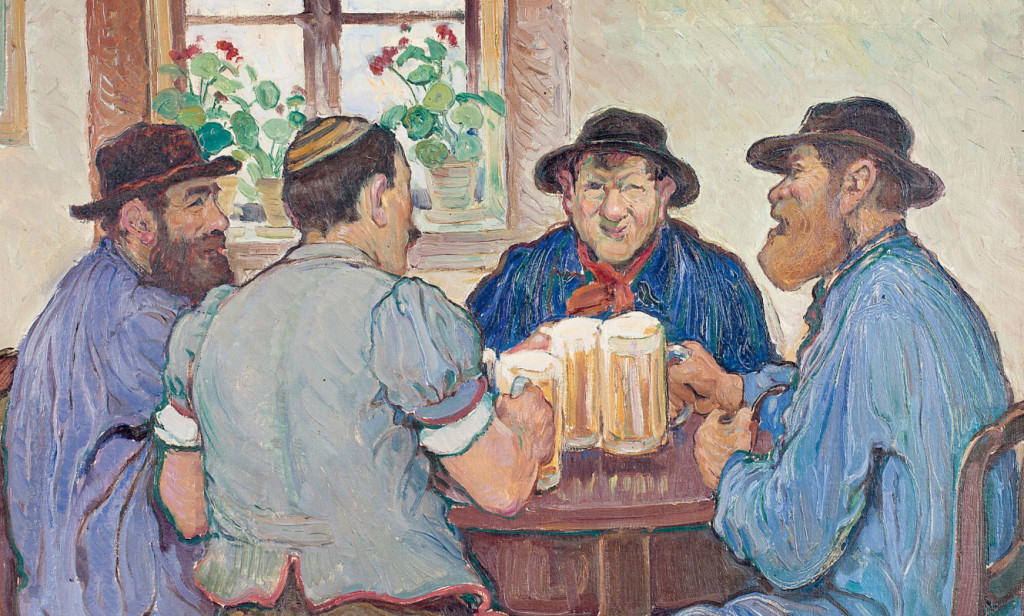Have We Hit Peak Fruit In Craft Brewing?

As the craft beer industry continues to explode, brewers are continuing to explore new flavors and additives to traditional styles of beer. But as we enter into the era of IPAs with the fruit du jour or lagers with pear juice, are consumers fueling the rise of gimmickry, or is this an outgrowth of ancient techniques in craft beer?
Anyone who peruses the beer aisle at their local craft brew store can see it plain as day: Ballast Point has several lines of their standard fare in newly fruited varieties, including watermelon and mango. Grapefruit IPAs, which seek to augment the natural grapefruit flavor of some hop varieties, are also on the rise, including offerings from craft stalwarts Sam Adams and Schlafly.
Indeed, adding fruit to beer is not a new idea. The spontaneously fermented beers of Belgium are sometimes combined with various fruits to add different flavors to the base beer, including sour cherries, strawberries, and raspberries. These beers are highly coveted, especially those from Cantillon and 3 Fonteinen. In America, breweries are seeking to replicate their Belgian counterparts. Russian River Brewing Company in Santa Rosa, CA is one of the most well-known breweries that offers similar styles and, in some cases, are equally as coveted.
However, with the rise of “beer-ish” products like the “A-Rita” line from Budweiser and multi-flavored wheat beers from Shock Top and Blue Moon, it seems that craft breweries are following the corporate giants in getting away from the art and techniques of traditional fruit beers to attempt to appeal to the masses with newly fruited beers that often blend together with the grace of a giant craft fruit salad.
As author Adrian Tierney-Jones noted on his blog earlier this year, at some point these fruited IPAs are going to become “homogenous.” And while there is a potentially looming hop shortage (which is causing some brewers to turn to fruit), Tierney-Jones “cannot help feeling that adding fruit to an IPA is sucking up to a sweet-toothed crowd in the search of the next gimmick.” To back this up, All About Beer Magazine claimed that the en vogue fruits from years ago, cherry and raspberry, are “almost commonplace, and brewers making fruit beers are no longer unique.” Threads on BeerAdvocate, a message board for beer enthusiasts, have also spawned debates on the topic, wondering if this is a necessity for businesses to keep up in an ever more crowded marketplace.
However, at the end of the day, the rise of the craft beer movement is intrinsically linked to the idea that consumers are tired of macro adjunct lagers and want more innovation and variety in their beer. I think beer blog Boak and Bailey provides a great perspective — brewers who throw a bunch of trendy additives in beer will wind up with a bad product. But, a beer that “is thoughtfully designed and carefully developed, where the left-field flavour [sic] is brewed in rather than merely added at the end, may well do a better job of truly integrating it into the finished product.” The piece continues:
If all that matters is how the beer tastes, as some insist, then the brewer’s motives, or the authenticity of the additives, is neither here nor there, but we suspect that brewers who consider why they’re using a particular ingredient — who think about what the story is — might just generally be more careful and thoughtful, which tends to lead to better beer.
While some brews will always be gimmick-ridden attempts to draw in the latest set of craft beer drinkers, there is still potential for brewers to use fruit, and other additives, in inventive and thoughtful ways that push the boundaries of what we call beer. Buying the products of those who are staying true to the essential elements of beer is the best way a consumer can pay homage to the brewmasters of old and reward today’s pioneers, turning gimmick into craft beer mainstay.
Salvatore Colleluori is a political writer by day and a homebrewer and beer enthusiast by night. He holds a degree in Political Science from the George Washington University and enjoys reading about alcohol, history, and foreign relations. He is also an avid music lover, specifically jazz and the Grateful Dead.

